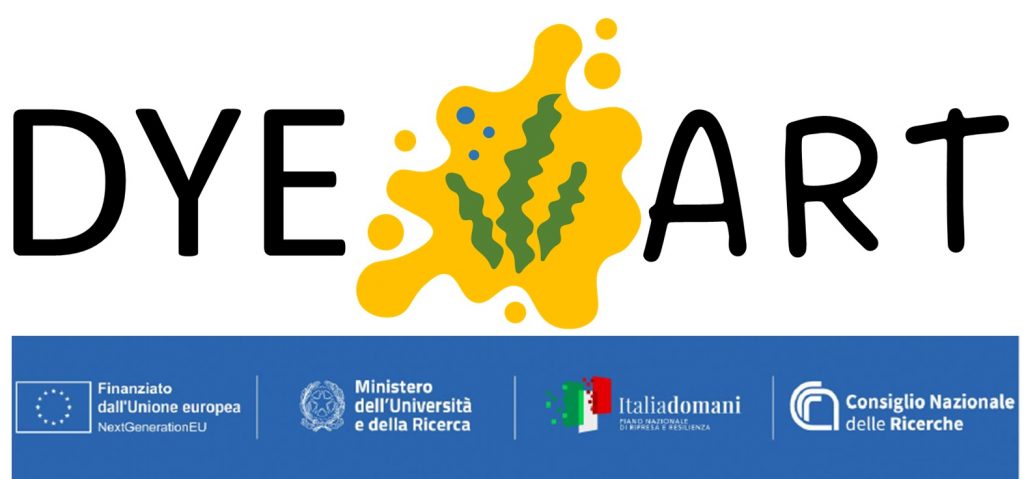
It stems from the collaboration between CNR-IBBA and the Polytechnic of Milan and is coordinated by two young researchers. DYE ART will study the possibility of improving the efficiency of photosynthesis in green algae and cyanobacteria through the use of organic pigments.
The project is based on a ground-breaking technology related to ‘In vivo incorporation of organic DYE to ARTificially enhance photosynthetic efficiency in green algae and cyanobacteria’, hence the acronym DYE ART and is funded by the European Union – Next Generation EU and the Ministry of University and Research among the program of Projects of Relevant National Interest (PRIN) within the National Recovery and Resilience Plan (PNRR) with a total budget of 224. 450 euro.
The project, coordinated by the Institute of Agricultural Biology and Biotechnology of the National Research Council (CNR-IBBA) with the collaboration of the Politecnico di Milano (POLIMI), is led by two young female researchers: Dr. Barbara Menin, Principal Investigator of the project for CNR-IBBA and Dr. Alessia Candeo, Associated- Principal Investigator for POLIMI. Over the next two years, DYE ART will investigate the potential of an innovative biotechnological approach to improve the efficiency of photosynthesis in promising photosynthetic unicellular organisms, commonly known as microalgae.
Nowadays -more than ever- the drastic climate changes we are witnessing require the development of efficient technologies for the sustainability and protection of natural resources and the environment. In particular, the reduction of greenhouse gas (GHG) emissions, of which almost 80% is carbon dioxide (CO2), is mandated to mitigate the deleterious effects on the climate. This is why the European Union has set stringent emission reduction targets in European climate legislation, imposing a 55% reduction by 2030 to achieve full climate neutrality – i.e. a zero balance between greenhouse gas emissions generated by human activity and those absorbed – by 2050.
The most widespread natural process on our planet for CO2 fixation is photosynthesis, in which the light is captured by antenna systems and is used to convert CO2 and water into oxygen and nutrients for the cell. However, photosynthesis is not as efficient as one might think; in fact, only a fraction of solar radiation is actually used by this fundamental biological process, i.e. around 45%. Among photosynthetic organisms, microalgae have faster growth rates and higher photosynthetic efficiencies than terrestrial plants (around 3% vs. 0.2-1%), which is why they are believed to play a key role in the future low-carbon economy and why their potential has led to an increasing interest from academia and industry in the development of CO2 Capture and Utilisation (CCU) technologies.
The term microalgae refers to eukaryotic and prokaryotic microorganisms (cyanobacteria), widely distributed in both freshwater and marine systems. They are of paramount ecological importance, as they produce about half of the atmospheric oxygen required for life on Earth. Microalgae are rightly regarded as ‘sustainable green factories’ and could become one of the most important and renewable sources of food and energy in the near future, with the advantage that they do not compete with traditional food production for resources, as they do not require arable land and can even be cultivated with wastewater. Despite their enormous potential, to date most biotechnology applications based on microalgae are not yet economically viable due mainly to the costs of harvesting and processing the algal biomass.
In order to make the process more economically viable, it is necessary to increase its production efficiency, and one of the possibilities is to make the photosynthetic process more efficient, resulting in an increase in both CO2 fixation (and thus a reduction in GHG emissions) and the production of the algal crop.
This is the ambitious goal of the DYE ART project, which aims to investigate a new and promising technology based on synthetic dyes that act as artificial antenna systems to improve the photosynthetic efficiency of green algae and cyanobacteria, increasing the percentage of photosynthetically active light that the cell can potentially harness for this bioprocess. The goal is to make microalgae-based biotechnological processes more sustainable, reducing the carbon footprint and increasing overall productivity.
This approach has been preliminarily validated by a pioneering study (Leone et al. 2021) on a microalgae species belonging to the diatom, a group of marine microalgae commonly known as phytoplankton, without however fully elucidating the mechanism of interaction between the organic pigment and the photosynthetic complexes.
DYE ART aims to characterise, verify and validate the artificial antenna approach in two other groups of microalgae – green algae and cyanobacteria – both of which are of key importance for the development of a wide range of biotechnological applications and are characterised by a different configuration of antenna and light-harvesting system complexes.
The project integrates cutting-edge multidisciplinary expertise in the fields of biology, biotechnology and photonics, bringing together both early-career and established researchers with extensive experience and strong know-how in their respective fields of research.
In particular, the CNR-IBBA research unit has extensive expertise in the application of multidisciplinary approaches to the study of photosynthesis and the genetics and physiology of microalgae, and has recently extended its interests to include metabolic engineering and applied biotechnology. The POLIMI research unit can rely on established expertise in the field of photonics and in particular on advanced spectroscopy and imaging skills, which will be further enhanced.
The two units share an innovative vision within their discipline and a strong belief in the importance of sharing their expertise to impact the advancement of scientific knowledge for environmental sustainability and ecological transition.
The complementary nature of the techniques that will be employed at their respective institutes is crucial to the successful outcome of the project, as it allows for the creation of a cutting-edge synergistic team.